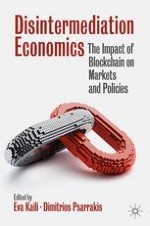2021 | OriginalPaper | Buchkapitel
14. Disposable Identities? Why Digital Identity Matters to Blockchain Disintermediation and for Society
verfasst von : Loretta Anania, Gaëlle Le Gars, Rob van Kranenburg
Erschienen in: Disintermediation Economics
Verlag: Springer International Publishing
Aktivieren Sie unsere intelligente Suche, um passende Fachinhalte oder Patente zu finden.
Wählen Sie Textabschnitte aus um mit Künstlicher Intelligenz passenden Patente zu finden. powered by
Markieren Sie Textabschnitte, um KI-gestützt weitere passende Inhalte zu finden. powered by
